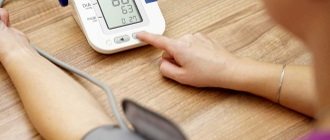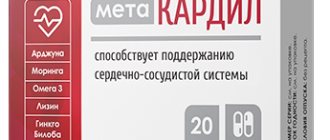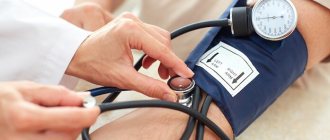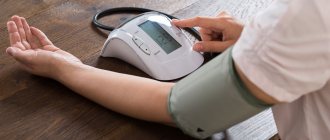Causes of increased hemoglobin levels
Hemoglobin levels can be influenced by a variety of functional and pathological factors. Their list includes:
- a long period of stay of people in high mountain areas, among the characteristic features of which are low atmospheric pressure, insufficient amount of oxygen from rarefied air for the normal functioning of the respiratory system
- passion for mountaineering
- living in industrial urban areas characterized by increased smoke and gas contamination of the surrounding environment with harmful substances
- high physical activity that causes tension in the male body due to performance of work duties, amateur or professional sports
- dehydration caused by irreplaceable loss of fluid due to work in hot climates, lack of opportunity to organize proper drinking regime
- disruption of the absorption of B vitamins
- addiction to alcohol and smoking, which impairs the supply of oxygen to tissues
- diagnosing oncology, endocrine diseases, intestinal obstruction, pathologies of the cardiac and vascular system
- manifestation of side effects after the use of medications, anabolic agents
Such reasons are prerequisites for determining hemoglobin levels. Timely adoption of measures to reduce it provides an opportunity to avoid the development of serious complications such as thrombosis of blood vessels, myocardial infarction, stroke and other diseases that pose a threat to the lives of patients.
How to quickly reduce hemoglobin in the blood at home?
Minor fluctuations in Hb levels caused by sports training or stress do not require the use of special correction methods.
The first thing you have to do to lower hemoglobin is to adjust your daily menu and diet. It has been noted that a diet with increased hemoglobin in men can achieve noticeable results in improving health.
And if the condition is not accompanied by concomitant diseases, it will allow the patient to avoid the need for drug treatment. Therefore, you should pay special attention to this issue and strictly follow nutritional recommendations.
The patient’s attending physician is responsible for preparing the diet, since many factors must be taken into account: the presence of pathologies, intolerance to certain foods and the reason that caused the Hb deviation from the norm. Let's look at the basic principles and recommendations for nutrition.
Read further: All about the norm of hemoglobin in the blood of men by age
Diet therapy
A diet to reduce hemoglobin in the blood does not involve reducing the consumption of iron-containing foods.
It is necessary to sharply reduce the consumption of iron-containing products in case of hemochromatosis - this is a congenital pathology that is accompanied by abnormal deposition of iron in excess quantities.
You should consume soups at least once a day every day. Even in the summer, when it is too hot, it is possible to diversify your diet with cold soups - okroshka, gazpacho or botvinya.
The consumption of red fish and meat, especially fatty varieties, should be limited.
Preference should be given to vegetable and fermented milk dishes. It is worth noting 2 advantages of vegetables: a large amount of liquid in their composition and a low content of iron ions. Dairy products compete with iron ions for absorption, so increasing their share in the diet will significantly slow down the flow of iron into the body.
It is useful to include grapes, tofu cheese, rice, and bread in the menu.
About the importance of water
Some men deliberately limit their fluid intake in the summer in order to sweat less. However, this is an erroneous tactic of behavior that leads to dehydration and a decrease in oxygen in the tissues. The consequence is the manifestation of unwanted symptoms:
- increased craving for sleep;
- frequent headaches;
- state of lethargy;
- general weakness;
- worsening mood.
In parallel with this, blood thickening occurs, the danger of which was discussed above. In order to avoid this condition, it is necessary to consume a minimum amount of fluid, which is calculated taking into account the weight and physical activity of each person.
You should choose green tea, compotes and fruit drinks. It is better to avoid coffee, carbonated drinks and juices. Because they do not quench thirst and increase sweating.
It is optimal if a man drinks 100 ml of unsweetened water at room temperature every hour.
Forbidden foods
Taking any vitamins and nutritional supplements should be discussed with your doctor in advance. Since an excess of certain groups of vitamins can increase the absorption of iron and the production of blood cells. Particular attention should be paid to vitamin C, a sufficient daily amount of which a man receives with food if the menu is properly composed.
A large number of iron ions are typical for seafood, especially sea fish. During treatment, it is advisable to completely exclude them from the diet or minimize them.
You will also have to reduce the amount of sugar consumed, and, accordingly, all sweet baked goods, chocolate and candies. Despite the low iron content in their composition, they create a favorable environment in the gastrointestinal tract (GIT) for enhanced absorption.
It is also necessary to limit the consumption of alcoholic beverages.
Folk remedies
The use of alternative medicine methods cannot act as a full-fledged alternative to traditional methods. Folk remedies are an addition to the prescribed treatment. However, their use must be previously agreed upon with the attending physician. This is necessary to eliminate the risk of reducing the therapeutic effectiveness of drugs by various substances from traditional medicine.
One of the recommended traditional medicines is mumiyo. Available in the form of powder, tablets or capsules. It should be emphasized that during its use it is strictly forbidden to drink alcohol and smoke.
Bloodletting using medicinal leeches was also used to lower Hb levels. However, there is currently no reliable confirmation of the effectiveness of this method.
Symptoms of elevated hemoglobin in men
An increased level of hemoglobin in the male body can cause nonspecific symptoms, which can manifest themselves with the development of many other pathological conditions. These include:
- redness, peeling of areas of the skin and their alternation with pale areas on the patient’s body
- loss of appetite
- the appearance of lethargy, weakness, increased fatigue
- decreased performance of hearing and vision organs
- problems getting proper rest at night
- pain in muscles, joints, bones
- the appearance of headaches, dizziness, feeling of fullness in the abdominal cavity
- high incidence of constipation and diarrhea
- constant drowsiness
- disruptions in the functioning of the genitourinary system
An increase in blood viscosity complicates its circulation within the male body, intravenous injections and infusion of medications. There is a danger of blood clots, and the risk of heart attacks and strokes increases.
Diagnosis and treatment of high hemoglobin levels in men
High hemoglobin levels are determined by performing a routine clinical blood test. After collecting anamnesis and identifying the causes of this pathological phenomenon, a treatment plan is drawn up aimed at reducing hemoglobin to 140 g/dm³ - 170 g/dm³. The main activities include:
- carrying out drug therapy based on the use of anticoagulants, blood thinning drugs that have vasodilatory properties, and also prevent red blood cell aggregation
- the use of traditional medicine recipes based on cranberries, honey, lemon, meadowsweet root, herbal infusions of mint, birch buds, willow bark, sweet clover
- hirudotherapy or bloodletting procedures
- organization of the correct water regime and dietary nutritious diet, excluding iron-containing foods and based on the use of dill, cinnamon, legumes, vegetables, fruits, seafood, sea fish and algae, garlic, horseradish, radish
- giving up bad habits, playing sports, walking
A healthy lifestyle, calmness and an optimistic mood are the key to a successful solution to the problem of increased hemoglobin levels in the blood of men!
Iron deficiency anemia - symptoms and treatment
Treatment is carried out with iron-containing preparations, mainly for oral administration and much less often for intramuscular or intravenous administration. The drugs should not be taken without a doctor’s prescription, since an excess of iron is dangerous due to its consequences - dental damage, the development of hepatitis, liver cirrhosis, diabetes and cardiovascular diseases. Severe allergic reactions are also possible.
If you have anemia, you should change your diet and include foods that contain iron in the most digestible form - veal, beef, lamb, rabbit meat, liver, tongue. It is important to remember that up to 30% of iron is absorbed from meat, 10% from fish, and only 3-5% from plant foods.
In case of anemia, correction of iron deficiency cannot be achieved by dietary changes alone. The reason for this is that the absorption of iron from food is limited, and in preparations it is contained in higher concentrations.
When treating patients with IDA, it is necessary to take into account the nature of the underlying disease and the presence of concomitant pathology, the age of the patients (children, old people), the severity of anemic syndrome and iron deficiency, tolerability of iron supplements, etc. [3].
For mild to moderate anemia, it is better to take iron supplements orally along with ascorbic or folic acid , as they improve the absorption of iron.
Within two hours before or after taking iron supplements, it is not recommended to drink coffee and caffeine-containing drinks (cocoa, chocolate, tea), cereals (rye, barley, oats, wheat), nuts, legumes, milk, eggs and dairy products, fatty and flour products, as well as some medications and vitamins containing calcium, magnesium, zinc, selenium, iodine, chromium. This will help avoid deterioration in iron absorption. All iron supplements are prescribed by a doctor individually. The course of treatment is at least 1.5-2 months, possibly longer. In addition to restoring the level of iron in the blood, you need to create its reserve in the body, that is, increase the level of ferritin. The success of treatment is indicated by normalization of hemoglobin levels after 1-2 months [9][10].
If iron preparations cannot be taken orally (for example, in case of intolerance or impaired absorption of iron in the intestine), then they are administered intramuscularly or intravenously. Injectable iron preparations are used only in hospitals, as they can cause shock reactions. They cannot be used during pregnancy and lactation.
, red blood cell transfusion is performed in a hospital setting
Hematogen can be used as a therapeutic and prophylactic agent for patients who do not have diabetes mellitus. It contains iron, which binds proteins obtained from the blood of cattle, as well as ascorbic acid and the necessary protein complex. However, this is a fairly high-calorie product - 100 g of hematogen contains 350-500 kilocalories, this should be remembered when including it in the diet.










